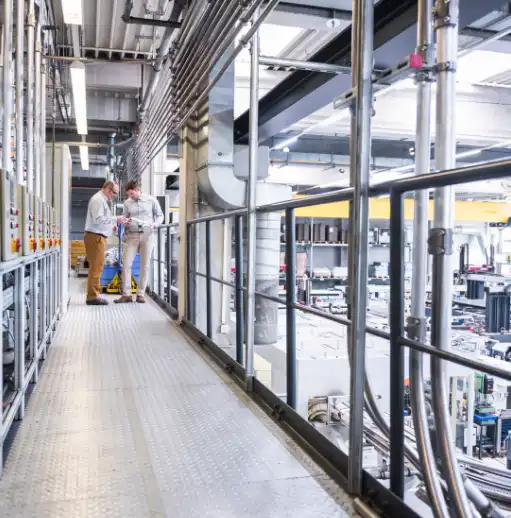
Your city has won the bid to host an event that will bring hundreds of thousands of visitors, and potentially billions in revenue. Whether the event is a major political summit, a global trade show, or a large-scale cultural event, it’s an exciting opportunity. But as the initial enthusiasm settles, a sobering question emerges: where will this event be hosted?
Suddenly, you find yourself needing to make a series of crucial decisions. Should you construct a new venue, or could you remodel and retrofit existing ones? How will you ensure operational efficiency during the event? What plans are in place for after the event? These decisions extend beyond considerations of attendee capacity, aesthetics, logistics, or even the event’s success. They are choices that will impact the long-term sustainability and economic health of the surrounding community.
Welcome to the complex world of facility management for big events.
The sustainability question
According to green software company Greenly, the event industry is responsible for as much as 10% of global greenhouse gas emissions. These emissions include anything from transportation to printed event materials, and the overall energy consumed adds up to a significant carbon footprint.
For example, the typical attendee at a national conference generates over 4 pounds of waste per day, most of which ends up in landfills. You can take steps to reduce emissions by cutting back or eliminating plastic bottles, paper napkins, and even printed marketing materials like brochures or posters. But just as important as what happens in the facility is the facility itself.
New venues offer a clean slate, allowing for innovative design and state-of-the-art technology integration. A new structure can become an instant landmark and a symbol of progress. However, the environmental costs are always significant. New construction projects demand incredible amounts of resources and energy, contributing to increased carbon emissions. The concrete industry alone makes up 8% of overall global carbon emissions, according to a 2020 Princeton study on the environmental impact of the construction industry.
However, repurposing existing venues presents its own set of challenges and opportunities. For instance, adapting an older existing structure can significantly reduce the environmental impact of construction, with the finished venue adding to the cultural and historical fabric of a city. At the same time, repurposing always also means retrofitting and it can be difficult to meet new codes for electrical, plumbing, and fire suppression. Changing how you use the space can also be hard. Floorplans, doors, and windows in older facilities are literally set in stone.
Leveraging BIM for decision-making
New technologies are helping answer the question of what to do with old buildings. One of the most powerful tools in this decision-making process is building information modeling (BIM).
BIM is an accurate, shareable, single source of truth that connects all teams on the project by incorporating multiple dimensions of data, including designs, materials, budgets, and timelines. Although traditionally implemented in the design and construction phases, owners and facility professionals are now leveraging new BIM-backed workflows later in the life cycle in operations and maintenance.
Using BIM, facility managers can efficiently plan, design, and manage buildings and infrastructure, creating a rich, digital twin of the physical and functional characteristics of a venue.
When it comes to deciding between new construction and renovation, BIM is extremely valuable.
For existing structures
BIM allows facility managers to create detailed digital models that include information about the building’s energy efficiency, structural integrity, and other important data. By running simulations within these models, facility managers can accurately predict how well a building could meet the demands of a major event, create different floor planning scenarios, and determine what renovations or retrofits would be necessary.
For new structures
BIM enables the possibility for creating and testing multiple design scenarios, different architectural approaches, materials, and systems to find the ideal solution for what’s needed. BIM can also be used to optimize the building’s performance over its entire life cycle from construction through the event and beyond.
Sustainability in action
Let’s look at some real-world examples that demonstrate the power of BIM with respect to venues for big events.
Melbourne Cricket Ground, Melbourne, Australia
The Melbourne Cricket Ground (MCG) is one of Australia’s most famous landmarks. It’s the Southern Hemisphere’s biggest stadium and has hosted everything from music concerts and rugby matches to visits from the Pope. Using BIM, facility managers created a digital twin to design interactive 3D stadium maps. The integration of BIM helps with better space management, allowing them to simulate various event scenarios and identify necessary upgrades without disrupting their year-round schedule of events.
The MCG opened in 1853, and throughout its history it has had numerous renovations to modernize its facilities. BIM has played a pivotal role in these upgrades through precise planning and simulation of changes, such as the installation of the venue’s retractable roof over the northern end of the stadium. The result is a multi-use venue that honors its legacy while meeting contemporary standards for facility management.
Tottenham Hotspur Stadium, London, United Kingdom
This state-of-the-art stadium was designed and constructed in 2019 using BIM technology at all stages of the life cycle. BIM empowered planners to create a unique retractable pitch system — the ‘pitch pocket’ — which can switch between natural turf for football games and synthetic turf for NFL games and concerts. BIM also enabled precise coordination between multiple systems in the stadium, including its complex roof structure, an advanced electrical system with several load scenarios, and its dynamic open building facade. The result is a highly flexible, multi-purpose venue that sets new standards in sustainability and fan experience.
Intuit Dome, Los Angeles, California, United States
This new facility, home to the NBA’s Los Angeles Clippers, is a prime example of how BIM is used to create a modern, sustainable sports venue. The 18,000-seat stadium includes the following features:
- 4,000 parking spaces
- 1,160 toilets and urinals
- 360-degree ‘halo board’ in the main arena with 200 million LEDs
- 75,000 square foot plaza with shops, restaurants, and offices.
The stadium represents what’s possible for a new facility when sustainability is in place from the beginning. BIM enables the creation of detailed simulations of the building’s energy use, helping designers create a fully electric facility that incredibly is set to operate 100% carbon free from day one.
The Intuit Dome features:
- 300 strategically placed solar panels connected to on-site batteries
- Special roof panels that block heat but allow sunlight
- Ongoing monitoring of emissions and transportation impacts
The result is a venue that sets a standard for low environmental impact and a positive benefit for the surrounding community.
Planning a sustainable future
The choice between building a new venue and repurposing an existing structure for major events is not always clear cut. Each approach has its merits and challenges. However, with tools like BIM, facility managers, owners, and other stakeholders are well-equipped to make informed sustainability decisions. The key lies in looking to the future and adopting a holistic approach. Depending on the scope of the event, its presence can affect the landscape of a city for many years to come.
The next crucial step is ensuring operational efficiency during the event itself. In our next blog post in this series, we will explore how BIM and digital twins are revolutionizing real-time facility management, allowing facility managers to respond to challenges with speed and precision. From scenario management to energy optimization, we’ll uncover how these cutting-edge technologies are making large-scale events smoother, safer, and more sustainable.








